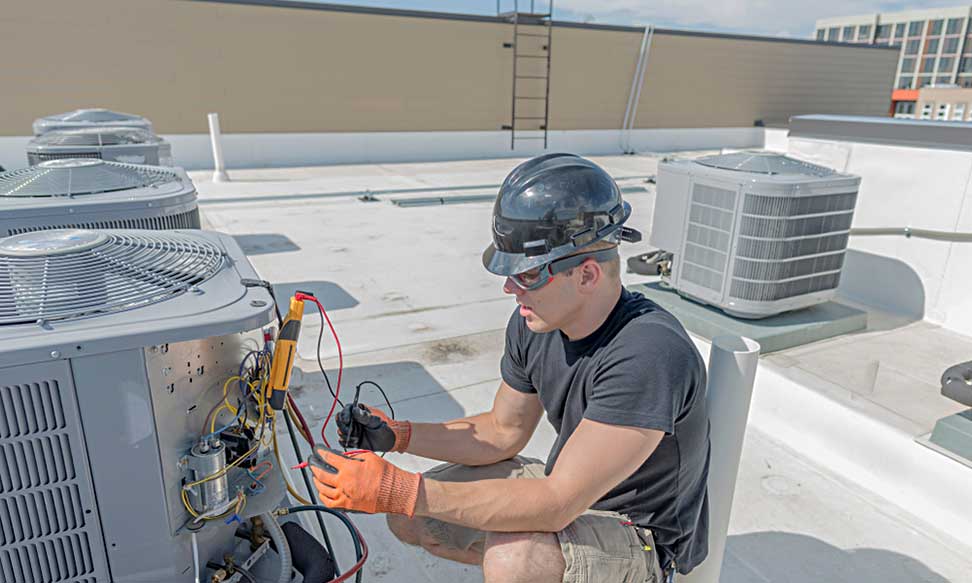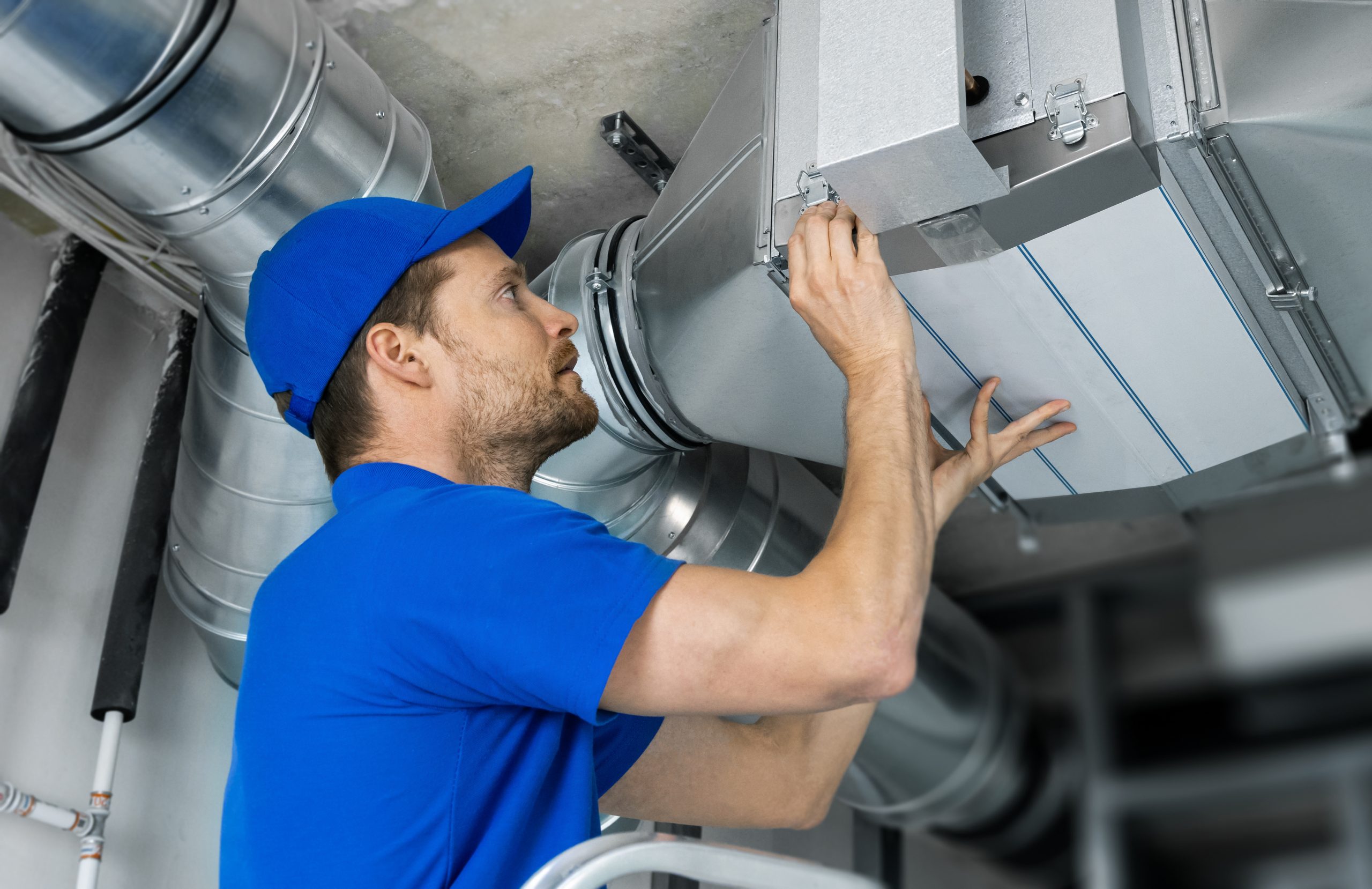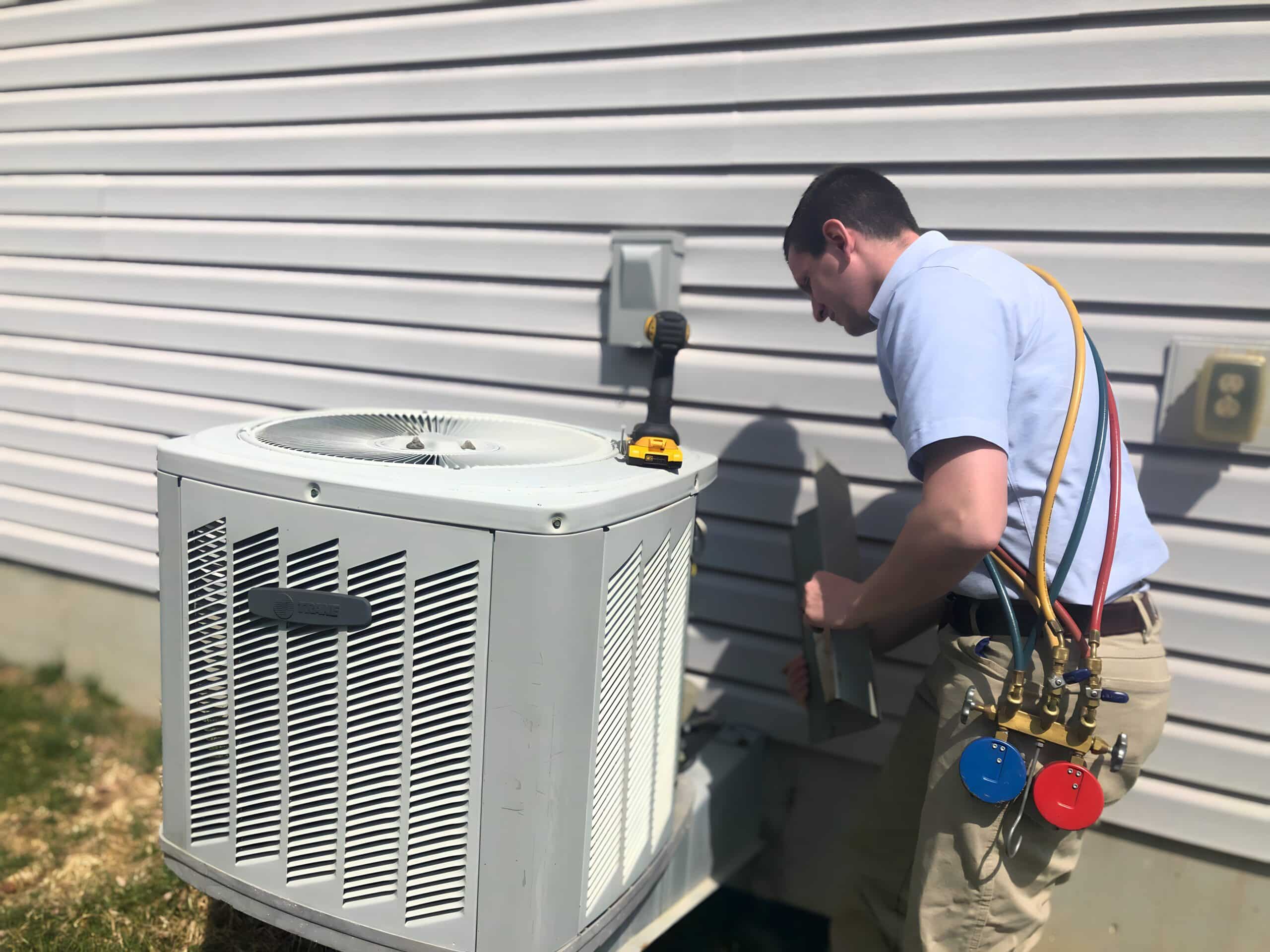Exactly How a Heat Pump and Heater Interact to Enhance Your Home's Home heating Performance
Recognizing exactly how a warmth pump and heater job with each other is necessary for homeowners seeking efficient home heating options. Each system has its toughness, offering a balanced technique to home comfort. The heatpump stands out in moderate temperatures, while the heater delivers quick warmth throughout severe cold. This harmony not just lowers power prices however also improves the life expectancy of both devices. What elements influence this partnership, and how can home owners maximize their advantages?
Understanding Heat Pumps: Just How They Function
Although lots of people might be unknown with their inner operations, heatpump play a necessary role in contemporary heating unit. These tools run by moving warmth from one area to an additional, using the principles of thermodynamics. In colder months, a warm pump removes warmth from the outdoors air, ground, or water, and transfers it inside to warm the home. On the other hand, throughout warmer months, it can turn around the process, serving as an air conditioning unit by getting rid of warmth from inside to the outside.Heat pumps consist of an evaporator, condenser, compressor, and development shutoff. The cooling agent within the system absorbs warm as it evaporates at low temperature levels and stress. The compressor then enhances the pressure and temperature of the refrigerant, permitting it to release warmth as it condenses. This reliable procedure can substantially reduce power intake compared to conventional home heating techniques, making warmth pumps a lasting selection for climate control in homes.
The Duty of Furnaces in Home Home Heating
Heaters play a crucial duty in home heating by offering a reputable resource of heat throughout the cooler months. They run by producing warm through combustion or electrical resistance, distributing it throughout the home via ducts or radiant systems. The efficiency of a heating system is commonly measured by its Yearly Fuel Use Efficiency (AFUE) rating, which suggests just how properly the device converts fuel into heat.Furnaces can make use of various power sources, consisting of gas, oil, power, or propane, permitting home owners to pick one of the most appropriate option for their needs. Unlike warmth pumps, which may struggle in severe cool, heating systems preserve regular efficiency, guaranteeing that indoor temperatures stay comfy despite outside conditions. Furthermore, modern furnaces commonly come equipped with innovative technology, such as smart thermostats and variable-speed blowers, improving their effectiveness and responsiveness. This convenience makes furnaces an essential component in all-inclusive home heating approaches.

Benefits of Using Both Solutions Together
Incorporating the toughness of both heating systems and heatpump can lead to a more effective and effective home heating solution. Making use of both systems allows home owners to make the most of the warmth pump's energy performance during milder temperatures while counting on the furnace for even more extreme cold conditions. This twin strategy can substantially minimize power costs, as warmth pumps eat less electrical energy than standard home heating methods when temperature levels are moderate.Additionally, utilizing both systems with each other can enhance convenience degrees in the home. Heatpump can give consistent, even heating, while heaters can quickly raise ambient temperature levels when required. Furthermore, the integration of both systems can extend the lifespan of tools by lowering wear and tear on each system, as they share the work. Inevitably, home owners can enjoy a well balanced, cost-effective home heating service that readjusts flawlessly to varying weather, ensuring a cozy and welcoming home throughout the cold weather.
How Warmth Pumps and Furnaces Enhance Each Various Other
They create a complementary heating system that optimizes efficiency and comfort when property owners integrate warmth pumps and heating systems. Heatpump operate by moving heat from the outdoors air or ground, making them highly effective in modest climates. They stand out throughout milder temperature levels, giving affordable heating. Conversely, heaters produce warm via burning or electrical resistance, delivering strong, instant warmth throughout extreme cold conditions.The mix of these 2 systems enables for dynamic adjustments based upon temperature level changes. Throughout warmer months or milder winter season days, the heatpump can take the lead, conserving power and decreasing costs. As temperatures decrease, the heater can flawlessly engage, making sure constant heat throughout the home. This harmony not only enhances energy use but additionally enhances the lifespan of both systems, as each system operates within its ideal performance variety. With each other, they create a balanced atmosphere that adapts to varying environment demands.
Maximizing Efficiency: Tips for Homeowners
Homeowners can enhance their home heating efficiency with several practical strategies. Establishing a regular upkeep schedule, incorporating wise thermostat technology, and executing effective insulation and securing services are vital actions. These steps not only improve convenience yet additionally minimize power costs.
Regular Upkeep Set Up
To guarantee optimal home heating efficiency, developing a regular maintenance timetable is necessary for any kind of home. Homeowners must focus on regular evaluations of both heat pumps and heaters to determine peak efficiency. This consists of transforming air filters check this every one to three months, as clogged filters can significantly decrease effectiveness. In addition, organizing professional maintenance at the very least once a year enables service technicians to recognize and deal with potential issues before they intensify. Home owners should likewise clean up the heatpump's outdoor unit to avoid particles accumulation that can impede airflow. By adhering to a regular maintenance schedule, house owners not just enhance their heating unit' performance but likewise expand their life-span, resulting in greater comfort and reduced energy costs throughout the colder months.
Smart Thermostat Combination
Incorporating a smart thermostat right into a home furnace can substantially improve power effectiveness, especially as it enables for specific control over temperature level setups. These gadgets can find out the homeowner's routine and choices, automatically adjusting the temperature to enhance comfort while minimizing energy usage. For instance, they can reduce home heating during times when the home is vacant, reducing unnecessary intake. Many clever thermostats likewise provide real-time power usage data, making it possible for house owners to make enlightened decisions regarding their home heating behaviors. In addition, remote access via smart device applications permits individuals to adjust setups from anywhere, making sure the home is warm upon return. On the whole, wise thermostat combination not just enhances comfort yet significantly adds to power savings and efficiency.
Insulation and Sealing Solutions
Smart thermostats play an important function in energy performance, yet their effectiveness can be substantially improved by proper insulation and sealing services. Property owners should prioritize insulating wall surfaces, attics, and floorings to decrease warm loss. Top quality insulation materials, such as spray foam or fiberglass, can substantially enhance see page thermal resistance. Furthermore, sealing spaces around doors, air ducts, and windows protects against cool air seepage and heat escape. Weatherstripping and caulking are efficient methods for addressing these leakages - ductless mini splits. Regular evaluations for air leakages, along with using blower door examinations, can assist recognize issue areas. By purchasing insulation and sealing, home owners can optimize the efficiency of their heater, inevitably bring about lowered power intake and lower energy bills
Usual Misconceptions About Warmth Pumps and Furnaces
What misconceptions surround heatpump and heating systems? Numerous individuals wrongly think that heat pumps are ineffective in cooler environments. In reality, modern warm pumps are developed to run efficiently also in low temperatures, providing trusted heating throughout winter months. Another usual misconception is that furnaces are constantly more reliable than heatpump. Nonetheless, this depends upon the specific energy sources and effectiveness ratings of the systems in concern. Some may also think that utilizing both systems concurrently is unnecessary, however as a matter of fact, this mix can optimize home heating performance, particularly during severe weather conditions. In addition, individuals usually think that warm pumps call for continuous upkeep, when in reality, they have comparable upkeep requires to conventional furnace. By unmasking these myths, house owners can make even more enlightened choices concerning their heating choices, eventually leading to boosted convenience and power performance in their homes.
Maintenance Considerations for Combined Solutions

Frequently Asked Concerns
Can Warm Pumps Work Properly in Incredibly Cold Climates?
Warmth pumps can battle in very cold climates as a result of reduced effectiveness and warmth extraction restrictions. Nevertheless, innovations in technology have resulted in designs created for far better performance in such conditions, enhancing their practicality in extreme environments.
For How Long Do Heat Pumps and Furnaces Usually Last?
Heatpump commonly last 15 to two decades, while heating systems have a lifespan of 15 to thirty years. Routine upkeep can prolong their durability, guaranteeing effective procedure and lowering the demand for premature replacements.

What Is the Typical Cost of Setting Up Both Systems?
The ordinary expense of setting up both a heatpump and a heater usually varies in between $5,000 to $10,000 - furnace replacement. Factors affecting this price include system size, setup intricacy, and regional labor rates
Exist Tax Motivations for Using Energy-Efficient Home Heating Equipments?
Numerous homeowners inquire concerning tax obligation incentives for energy-efficient heater. Different government and state programs often use credit scores or rebates, motivating the fostering of lasting technologies to minimize power consumption and promote environmental obligation.
How Do I Select the Right Dimension Heatpump and Heater?
Choosing the best dimension warmth pump and heater involves calculating the home's square video, considering insulation high quality, and examining neighborhood environment. Consulting an expert can ensure suitable system efficiency and power effectiveness based upon particular requirements. heat pump installation ooltewah tn. Recognizing just how a warmth pump and heater job with each other is crucial for home owners looking for reliable home heating remedies. In chillier months, a warm pump extracts warmth from the outdoors air, ground, or water, and transfers it inside your home to warm up the living area. When house owners integrate warm pumps and furnaces, they produce a corresponding home heating system that makes best use of performance and convenience. Heat pumps run by moving warm from the outside air or ground, making them very reliable in modest climates. Warmth pumps can struggle in extremely cool climates due to reduced performance and warm extraction constraints